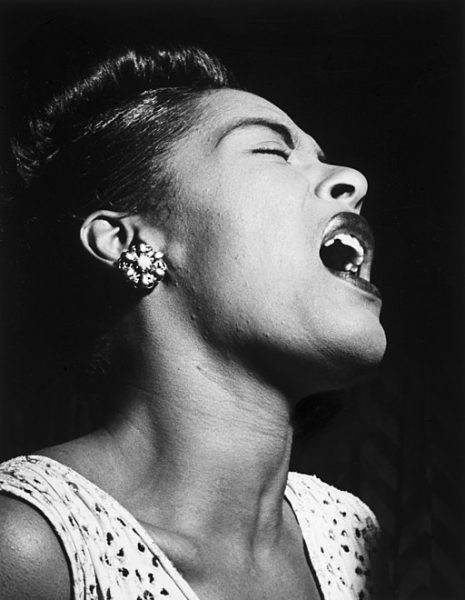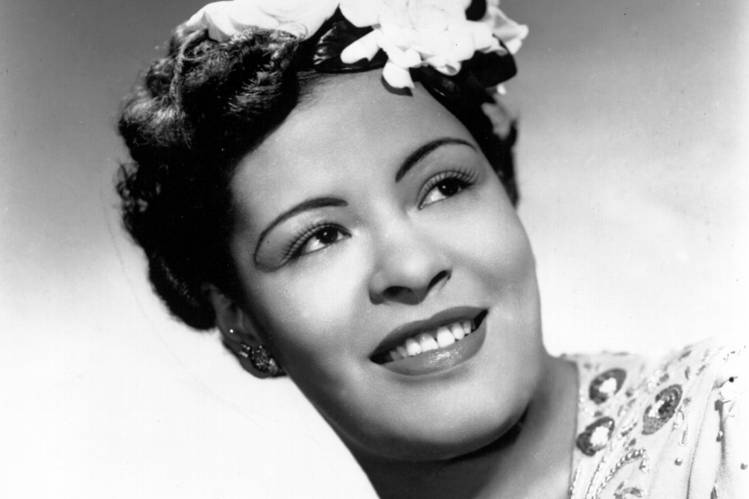Billie Holiday, a luminous and enigmatic figure in the annals of jazz history, left an indelible mark on the world with her haunting voice and poignant storytelling. Born Eleanora Fagan in Philadelphia in 1915, her journey from a tumultuous childhood to becoming one of the greatest jazz and blues singers of all time is a testament to resilience and raw talent. Billie’s voice, imbued with a unique blend of vulnerability and strength, could effortlessly navigate the complexities of love, loss, and the human condition.
Billie Holiday, birth name Eleanora Holiday, was the daughter of Clarence Holiday, a professional jazz musician and Sarah Juulia Fagan also called Sadie. At a young age, Holiday left his family to pursue his musical career, leaving Sadie, only 19 when she had Billie, to raise her. In 1920, Sadie married Philip Gough, which left them in a stable home life that soon ended. Eleanora and her mom struggled after the divorce. While there were relatives to care for Eleanora, they often abused her while her mother was at work. She started skipping school resulting in her and her mother being sent to court for her absences which sent her to House of Good Shepherd, a facility for troubled African American girls in January 1925. During that time she was only nine and one of the youngest girls there. He soon returned to her mother’s care in August of that year where she was sexually assaulted at ten and sent back in 1926 for being accused of seducing her attacker. After her release, she turned to prostitution and was arrested as a teenager.
During this time, Holiday became fond of jazz and singing on the brothel’s phonograph. In the early 1930s, she began singing at local Harlem nightclubs, adopting the name Billie Holiday after a popular actor at the time, Billie Dove. It wasn’t long before she was performing with some of the biggest names in jazz history. During this period, Holiday crossed paths with saxophonist Lester Young, a member of Count Basie’s orchestra intermittently over the years. They formed a close friendship, and at one point, Young even resided with Holiday and her mother Sadie. In 1937, the same year she joined Basie’s band, Young bestowed upon Holiday the nickname “Lady Day.” In return, she affectionately referred to him as “Prez,” signifying her admiration.
In a largely segregated time, chart-toppings were reserved for white performers. Billie’s first recordings were little more than second-rate songs intended specifically for black artists, turning them into masterpieces that many considered to be one of her finest.Holiday embarked on a tour with the Count Basie Orchestra in 1937, and the subsequent year saw her collaboration with Artie Shaw and his orchestra. Notably, this partnership marked a groundbreaking moment as she became one of the first African American female vocalists to work with a white orchestra.However, despite her talent and contributions, promoters raised objections against Holiday, citing both her race and distinctive vocal style. Frustrated by these challenges, she eventually left the orchestra.

Returning to New York, Billie set her base of operations at the Cafe Society, an interracial club where she began performing her landmark hits “God Bless the Child” and “Strange Fruit.” Her record company, Columbia, wasn’t interested in “Strange Fruit” as it was a hauntingly descriptive story about the lynching of African Americans in the South which received a warning from the Federal Bureau of Narcotics, a government agency to never sing the song again. Written and composed by Abel Meerpool, the lyrics were drawn from a poem by Meerpol himself in 1937, the same year when the senate considered passing a bill that forever stopped the lynching my African-Americans…only for it to not be passed. Billie Holiday sang “Strange Fruit” as a way to protest against the lynching by comparing the victims to the fruit of a tree. With part of the lyrics being:
Southern trees bear strange fruit
Blood on the leaves and blood at the root
Black bodies swinging in the southern breeze
Strange fruit hanging from the poplar trees
Holiday refused and continued to sing.
The commissioner of the Federal Bureau of Narcotics (FBN), Harry Anslinger, perceived Billie Holiday as a symbol embodying everything that America feared. According to Johann Hari, author of “Chasing the Scream: The First and Last Days of the War on Drugs,” Anslinger’s perspective was influenced by Holiday’s struggles, including a heroin addiction stemming from the traumatic experiences of childhood abuse. Holiday’s resilience against racial injustice and her determination to assert her rights as an American citizen, particularly through her performance of “Strange Fruit,” further fueled Anslinger’s determination to undermine and ruin her.
In that same year, Billie Holiday achieved success with the hit “God Bless the Child.” Subsequently, she signed with Decca Records in 1944, securing an R&B hit the following year with “Lover Man.” During this period, her boyfriend, trumpeter Joe Guy, introduced her to heroin use. The passing of her mother in October 1945 intensified her struggles, leading to increased alcohol consumption and escalated drug abuse as a means to cope with grief. Despite personal challenges, Holiday maintained her prominence in the jazz and popular music scenes. In 1947, she appeared alongside Louis Armstrong in the film “New Orleans,” albeit in the role of a maid.
Her drug-related troubles peaked in 1947 when she was arrested and convicted for narcotics possession. Serving a sentence of one year and a day, Holiday underwent rehabilitation in Alderson, West Virginia. Upon release, she faced obstacles in obtaining licenses for cabarets and clubs due to her conviction but continued performing in concert halls, including a sold-out show at Carnegie Hall.
Assisted by John Levy, a New York club owner and later her boyfriend and manager, Holiday overcame some hurdles and gained the opportunity to perform at Club Ebony. However, she faced another arrest for narcotics, though she was acquitted. In the 1950s, despite the toll on her voice from a tumultuous lifestyle, Holiday continued touring and recording. Norman Granz, owner of several jazz labels, signed her in 1952, leading to a successful European tour in 1954. In 1956, she shared her life story in the autobiography “Lady Sings the Blues,” co-written with William Dufty, though its accuracy was questioned due to her deteriorating condition during the collaboration.
Holiday’s association with Louis McKay began around this time, resulting in their marriage in 1957. McKay, like previous men in her life, exploited her name and finances. Despite vocal challenges, she delivered a remarkable performance on “The Sound of Jazz” in the late 1950s. Her final recording, “Lady in Satin” (1958) with the Ray Ellis Orchestra, showcased a rougher voice but retained emotional intensity.
Billie Holiday gave her last performance in New York on May 25, 1959, before being admitted to the hospital for heart and liver issues. Struggling with heroin addiction, she faced arrest even in the hospital. Holiday passed away on July 17, 1959, due to complications related to alcohol and drugs. Her funeral at St. Paul the Apostle Roman Catholic Church drew over 3,000 attendees from the jazz world. Recognized as one of the greatest jazz vocalists, Holiday’s influence endures, and her autobiography was adapted into the 1972 film “Lady Sings the Blues,” featuring Diana Ross. In 2000, she was admitted into the Rock and Roll Hall of Fame, with Diana Ross handling the honors.
Billie Holiday’s impact on the world of music goes beyond her exceptional vocal talent; it extends into the realm of social activism and protest. Through her haunting performance of “Strange Fruit,” she courageously used her art as a powerful tool to confront the racial injustices and systemic oppression prevalent in 20th-century America. Holiday’s willingness to tackle sensitive and controversial topics showcased her commitment to social change and the advancement of civil rights. Her protest through music exceeded entertainment, leaving a permanent mark on the fight against racism and inequality. Billie Holiday’s legacy as a musical pioneer and a fearless advocate for justice continues to inspire and resonate with audiences, emphasizing the enduring connection between art and activism.



